When it comes to John Deere tractors, choosing between the E Series and G Series can be challenging. These two popular lineups offer distinct features and capabilities that cater to different farming and landscaping needs. We’ve analyzed both series to help you make an well-informed choice for your exact requirements.
Are you wondering which John Deere series delivers the best value? The E Series is known for its affordability and straightforward design, while the G Series offers enhanced comfort and advanced technology features. Throughout this article, we’ll break down the key differences in performance, specifications, and pricing to guide you toward the perfect match for your property or operation.
John Deere E Series vs G Series: An Overview
John Deere’s E Series and G Series tractors represent two distinct tractor lines designed to meet different customer needs and budgets. The E Series focuses on affordability and functional simplicity, making it ideal for budget-conscious buyers who need reliable performance for basic tasks. These tractors typically feature straightforward controls, fewer electronic components, and essential performance capabilities without the premium features.
G Series tractors, by contrast, offer advanced technology, enhanced comfort features, and superior performance specifications. These machines come equipped with more sophisticated hydraulic systems, improved transmission options, and ergonomic design elements that maximize operator comfort during extended use. Many G Series models include features like power steering, adjustable seats, and digital displays that aren’t standard on most E Series models.
The price difference between these series reflects their distinct positioning in John Deere’s product lineup. E Series tractors provide an entry point into John Deere ownership with lower initial investment costs, while G Series machines command higher prices due to their additional capabilities and comfort enhancements. Understanding these fundamental differences helps establish a foundation for comparing exact aspects of these popular tractor lines.
History and Evolution of the E and G Series
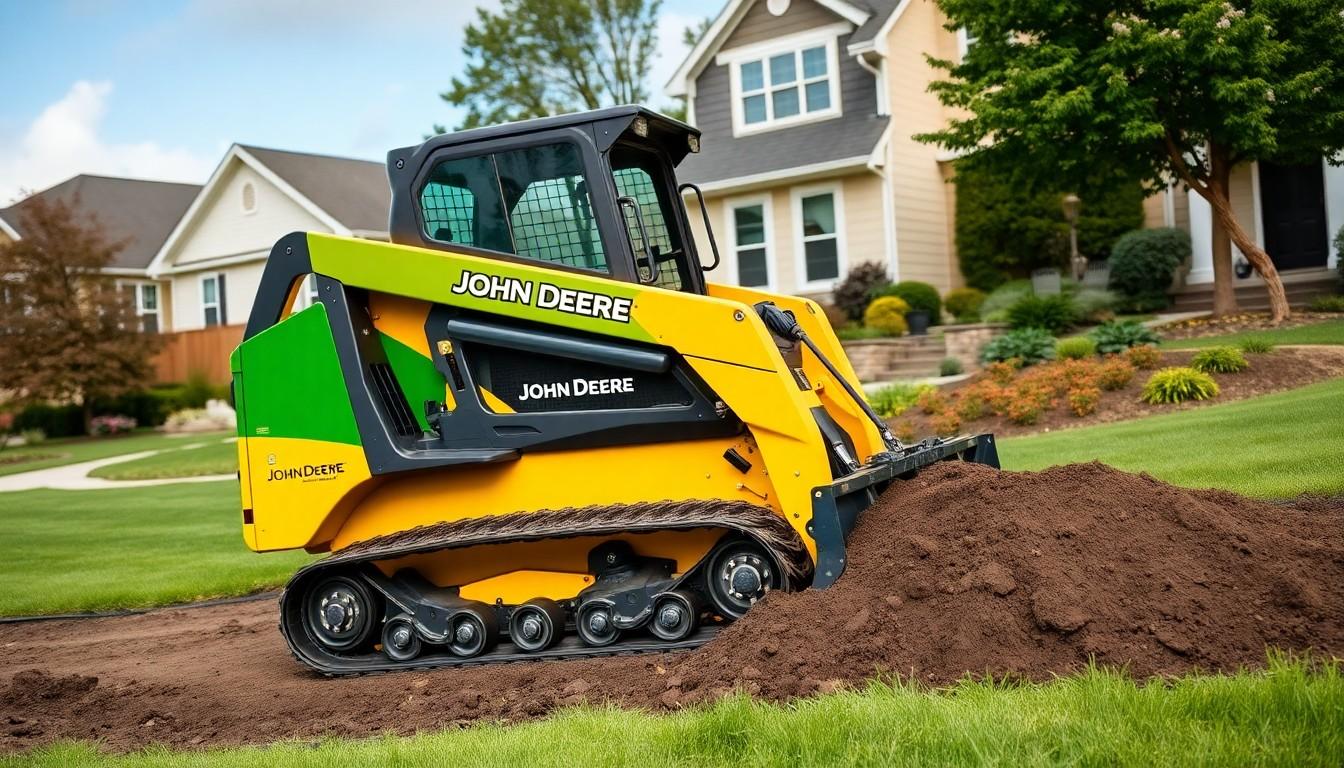
John Deere’s E Series and G Series compact track loaders and skid-steer loaders have developed distinct identities over time, each serving different market segments with exact capabilities.
E Series Development
The E Series emerged as a line focused on basic utility functions and light agricultural applications. These machines excel in lighter duties such as gardening and mowing, making them perfect for homeowners with smaller properties. E Series models typically feature user-friendly hydrostatic transmissions and operate with power outputs ranging from 24 to 40 horsepower. Their design prioritizes simplicity and accessibility for operators who don’t require advanced features for everyday tasks.
G Series Advancement
G Series loaders represent John Deere’s response to demands for more robust performance capabilities. These machines pack higher horsepower ratings between 30 and 66 HP, enabling them to handle more demanding agricultural and construction applications. The G Series incorporates many enhancements including optional electrohydraulic boom performance packages and two-speed transmissions that significantly reduce work cycle times. Larger frame models like the 330G, 332G, 331G, and 333G provide additional lift height, extended reach, and greater boom and bucket breakout forces for tackling challenging tasks.
Key Evolutionary Milestones
Both series have evolved to meet changing industry standards and user expectations. Engineers updated both lines to comply with Tier 4/EU Stage IV emissions regulations, ensuring they meet rigid environmental standards. The G Series introduced mechanical transmission options alongside enhanced ergonomic features, including an improved cab foot-well system that reduces cleanout time and improves operator comfort. While maintaining their core identity for lighter applications, E Series machines continue to offer reliable performance with straightforward controls. G Series models have expanded their versatility to excel in repetitive boom applications with increased pushing power, positioning them as the go-to choice for professionals with intensive workloads.
Key Design Differences Between E and G Series
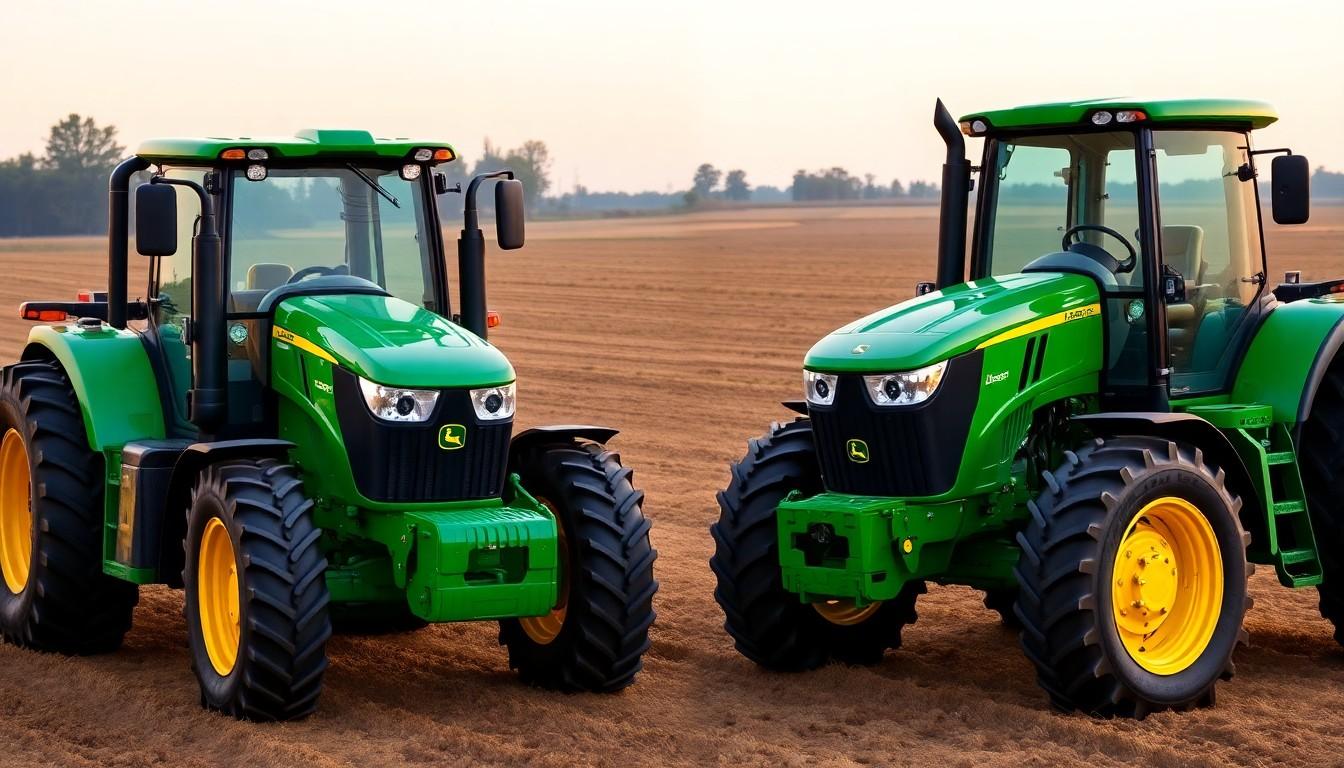
The design philosophies of John Deere’s E Series and G Series tractors reflect their intended purposes and target users. These differences extend beyond mere aesthetics to functional elements that impact performance and operator experience.
Aesthetic and Frame Design
The G Series showcases a more robust engineering approach compared to the E Series, with structural reinforcements that support its higher power output. Frame construction in the G Series incorporates additional strengthening elements to handle the increased operational demands of heavy-duty agricultural work. E Series tractors feature a simpler, more streamlined design focused on basic utility functions and light agricultural tasks. Their frame construction prioritizes accessibility and ease of maintenance rather than supporting maximum power output. The visual differences between the series are subtle but noticeable to experienced operators, with the G Series presenting a more substantial profile appropriate for its 30-66 HP engines.
Operator Station Improvements
G Series operator stations deliver significantly enhanced comfort features compared to their E Series counterparts. Ergonomic seating in the G Series includes improved cushioning and positioning to reduce operator fatigue during extended work sessions. Control layouts incorporate intuitive designs with easy-to-reach levers and switches positioned based on frequency of use. E Series operator stations offer basic functionality with standard seating and straightforward controls that meet essential needs without the premium comfort elements. Visibility from the operator position varies between models, with G Series tractors typically providing better sightlines to attachments and work areas. The overall operator experience reflects John Deere’s understanding that G Series users spend more time in the seat, necessitating greater attention to comfort and reduced fatigue.
Performance Comparison
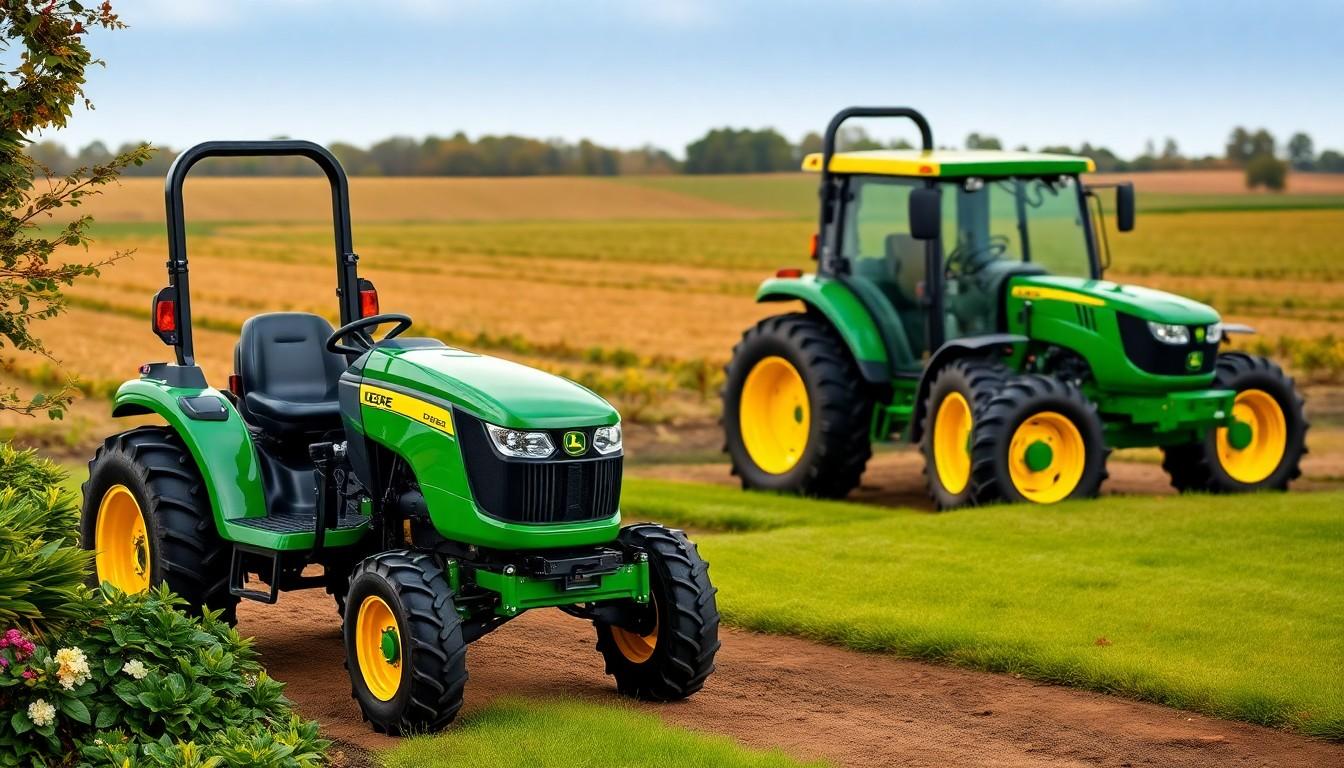
John Deere’s E Series and G Series tractors offer distinctly different performance profiles customized to exact user needs and tasks. Our analysis reveals clear differences in their capabilities, power outputs, and operational efficiency that directly impact their suitability for various applications.
Engine Power and Efficiency
The E Series tractors deliver horsepower ranging from 24 to 40 HP, making them perfectly adequate for lightweight applications such as gardening, mowing, and basic property maintenance. These compact powerplants provide enough muscle for homeowners and small-scale agricultural operations without excessive fuel consumption. E Series models meet Tier 4 emissions standards while maintaining their cost-effective operation for everyday tasks.
G Series tractors step up the power game significantly with 30 to 66 HP engines designed for more demanding workloads. These robust power plants enable operators to tackle heavier agricultural tasks and manage larger properties with greater efficiency. G Series wheeled harvesters demonstrate impressive fuel economy, consuming 16% less fuel per cubic meter of production compared to E Series equivalents. This enhanced efficiency translates to measurable reductions in carbon dioxide emissions while maintaining superior performance capabilities.
Hydraulic System Capabilities
E Series tractors feature user-friendly hydrostatic transmission systems that simplify operation for occasional users and those with less experience. These straightforward hydraulic setups provide adequate lifting capacity and carry out control for basic utility tasks. The hydraulic systems in E Series machines prioritize ease of use over maximum capability, aligning with their positioning as entry-level equipment.
G Series machines elevate hydraulic performance with more sophisticated systems that may include mechanical transmission options for enhanced control during complex operations. These advanced hydraulics deliver superior lifting capabilities and carry out responsiveness, supporting the G Series’ role in more intensive applications. The transmission options in G Series tractors give operators greater versatility across varied terrain and working conditions, matching the needs of professional users who require consistent performance under demanding circumstances.
Technology Features
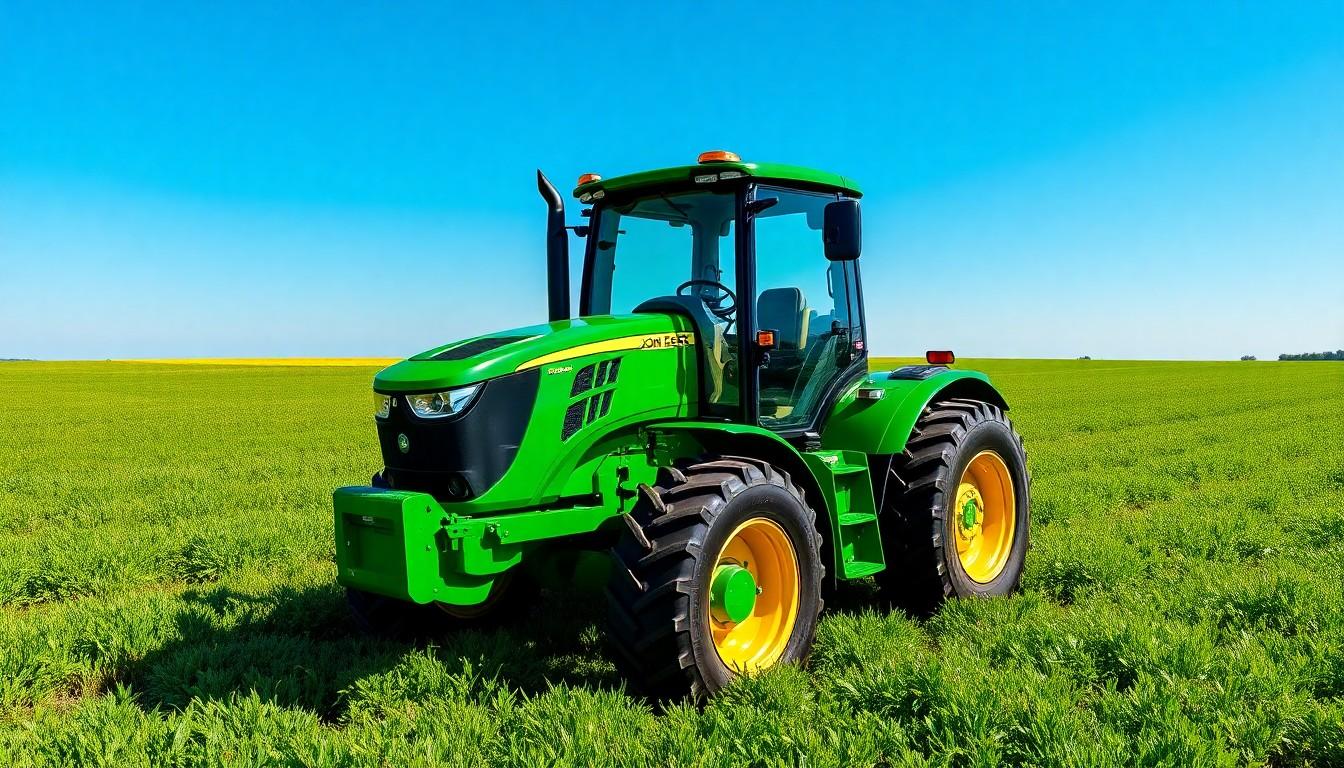
John Deere’s E Series and G Series tractors showcase important technological differences that impact their performance capabilities and user experience. These differences extend across several critical components that determine each series’ suitability for various agricultural and construction applications.
Engine and Emissions
The G Series incorporates FT4 (Final Tier 4) or EU Stage IV diesel engines that meet stringent emission standards while delivering enhanced power and torque. These advanced engines provide superior performance for demanding applications and comply with current environmental regulations. E Series engines, while still meeting necessary emissions requirements, don’t feature the same level of advanced emission control technology as their G Series counterparts.
Transmission
E Series tractors come equipped with hydrostatic transmissions that offer user-friendly operation, making them particularly appropriate for lighter tasks and novice operators. These transmissions provide smooth, stepless speed control that’s ideal for basic property maintenance. G Series models feature mechanical transmission options that deliver more precise control and better performance when handling heavier loads, giving operators greater versatility in challenging conditions.
Performance Packages
G Series tractors stand out with their optional electrohydraulic (EH) boom performance package, improving efficiency during repetitive boom applications. This technology optimizes hydraulic flow and pressure distribution, resulting in smoother operation and reduced operator fatigue. E Series models don’t offer this specialized performance enhancement, reflecting their focus on more basic applications.
Cab and Operator Comfort
The G Series features an enhanced cab design with a revolutionary foot-well system that cuts cleanout time in half compared to the E Series. This innovative design reduces maintenance requirements and improves operator productivity. Advanced ergonomic features in the G Series cabs include improved seating, optimized control placement, and enhanced visibility, creating a more comfortable work environment for extended operating periods.
Technological Advancements in the G Series
G Series tractors boast significantly higher horsepower ratings, ranging from 30 to 66 HP, compared to the E Series’ 24 to 40 HP. This power difference enables G Series models to handle more demanding agricultural tasks and heavier attachments with ease. Large-frame G Series models (330G, 332G, 331G, and 333G) provide additional lift height and greater boom and bucket breakout forces, making them ideal for intensive construction and agricultural applications.
Travel speeds reach up to 11 mph with the G Series’ optional two-speed transmission, enabling faster work cycles and improved productivity. This advanced transmission technology allows operators to choose the optimal speed for each task, balancing power and efficiency. G Series machines represent John Deere’s commitment to incorporating cutting-edge technology that enhances overall performance and versatility.
User Interface and Controls
G Series tractors feature enhanced operator comfort with premium seating, improved climate control, and reduced in-cab noise levels. These ergonomic improvements reduce operator fatigue during long work days and create a more productive working environment. E Series models offer basic comfort features that adequately support shorter operating sessions and less intensive work cycles.
Control systems in the G Series include more advanced options with mechanical transmission controls that provide precise operation in challenging conditions. These sophisticated controls give operators greater command over machine functions and attachments. E Series tractors use straightforward hydrostatic controls that prioritize ease of use, making them accessible to operators with varying experience levels.
The G Series’ improved ergonomic design includes the innovative cab foot-well system that simplifies maintenance and enhances operator comfort. This thoughtful design feature demonstrates John Deere’s attention to practical improvements that affect daily operation. Control placement and interface design in the G Series reflect extensive research into operator needs and preferences, resulting in an intuitive operating experience.
Durability and Maintenance Requirements
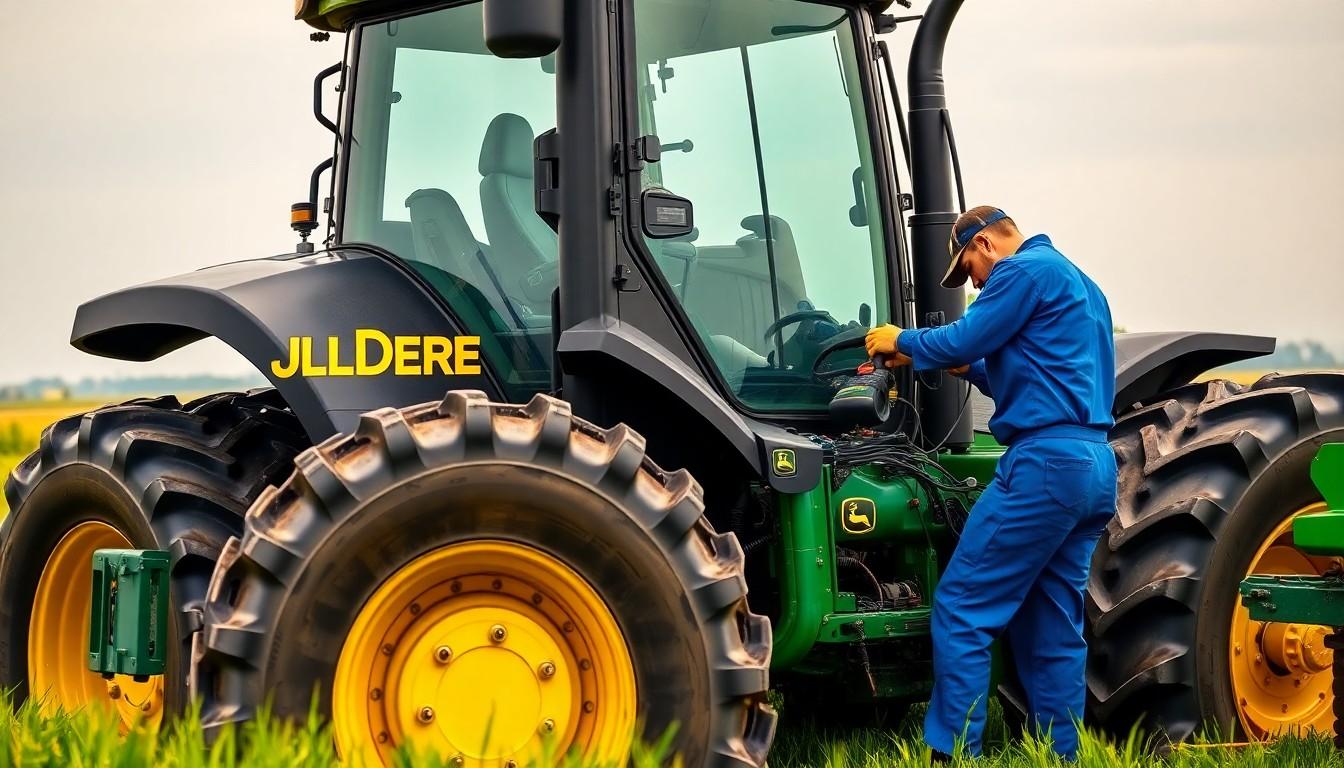
When comparing John Deere’s E Series and G Series tractors, durability and maintenance requirements stand as critical factors that impact overall ownership experience and long-term satisfaction. The G Series demonstrates enhanced durability for demanding applications, while the E Series offers simpler maintenance for basic utility tasks.
Service Intervals and Parts Accessibility
The service interval requirements between these two series reflect their different design philosophies. G Series tractors typically require more frequent maintenance checks due to their advanced engine technology and heavier usage profiles. These comprehensive service appointments help prevent major mechanical issues that could arise from intensive workloads. E Series tractors feature less complex systems that translate to simpler and less frequent maintenance needs, making them more manageable for owners who prefer handling basic maintenance themselves.
Parts accessibility remains excellent for both series thanks to John Deere’s extensive dealer network and service centers across the country. Owners can readily obtain necessary components when repairs are needed, though G Series parts sometimes require more specialized tools and expertise due to their complex systems. E Series components tend to be more straightforward and universally available, contributing to their appeal for budget-conscious owners who prioritize ease of maintenance.
Long-Term Reliability Factors
Engine technology plays a important role in the long-term reliability differences between these series. G Series tractors incorporate more sophisticated engine designs that contribute to improved fuel efficiency and reduced component wear when properly maintained. This advanced technology enhances longevity but introduces additional potential failure points if maintenance schedules aren’t strictly followed. E Series engines, with their simpler construction, offer reliable performance with fewer complications over time.
Operator comfort and ergonomics indirectly impact long-term reliability in noteworthy ways. G Series tractors feature enhanced comfort elements like ergonomic seating, intuitive control layouts, and reduced operator fatigue during extended use. These comfort features allow operators to work more efficiently and safely, reducing the likelihood of operator error that could damage equipment. E Series tractors provide basic comfort features that prove adequate for shorter work sessions but may not offer the same fatigue reduction benefits during all-day operations.
The structural build quality differs significantly between the two lines. G Series tractors are built with heavier-duty construction specifically designed to withstand more demanding tasks and challenging conditions. Their robust frames and reinforced components make them more resilient to daily wear and tear in commercial applications. E Series machines, while durable for their intended purposes, use construction that’s appropriate for lighter agricultural and property maintenance tasks rather than heavy-duty commercial use.
Cost Considerations

John Deere’s E and G Series tractors present different financial implications for buyers, from initial purchase to long-term ownership. Understanding these cost factors helps determine which series offers better value based on your exact needs and usage patterns.
Initial Investment
The E Series provides a more budget-friendly entry point into John Deere’s tractor lineup, making it accessible for homeowners and light agricultural users. Models in this series typically range from 24-40 HP and feature simpler designs with fewer advanced components, resulting in lower purchase prices. Many property owners appreciate the E Series’ practical approach that delivers essential functionality without the premium price tag of higher-end models.
The G Series represents a larger upfront investment due to its enhanced capabilities and more sophisticated engineering. With horsepower ratings between 30-66 HP, these tractors command higher prices that reflect their advanced features, superior performance specifications, and premium build quality. Though more expensive initially, the G Series’ fuel efficiency stands out—consuming 16% less fuel per cubic meter produced compared to the E Series, potentially offsetting the higher purchase cost through operational savings for high-usage owners.
Resale Value Comparison
E Series tractors maintain reasonable resale value even though their lower initial cost point. These machines appeal to a broad market of entry-level buyers seeking reliability and John Deere quality without premium features. Their simpler mechanical design often means fewer electronic components that could potentially fail over time, which some buyers in the secondary market find appealing.
G Series tractors typically command stronger resale values due to their higher performance capabilities and advanced feature set. Their versatility across various applications makes them desirable in the secondary market, particularly for buyers seeking machines that can handle more demanding tasks. The superior fuel efficiency, enhanced durability, and more sophisticated technology contribute to better value retention compared to the E Series models. For operations with intensive usage requirements, the G Series’ higher resale value combined with its operational efficiency often creates a more favorable total cost of ownership even though the larger initial investment.
Which Series Is Right for Your Needs?
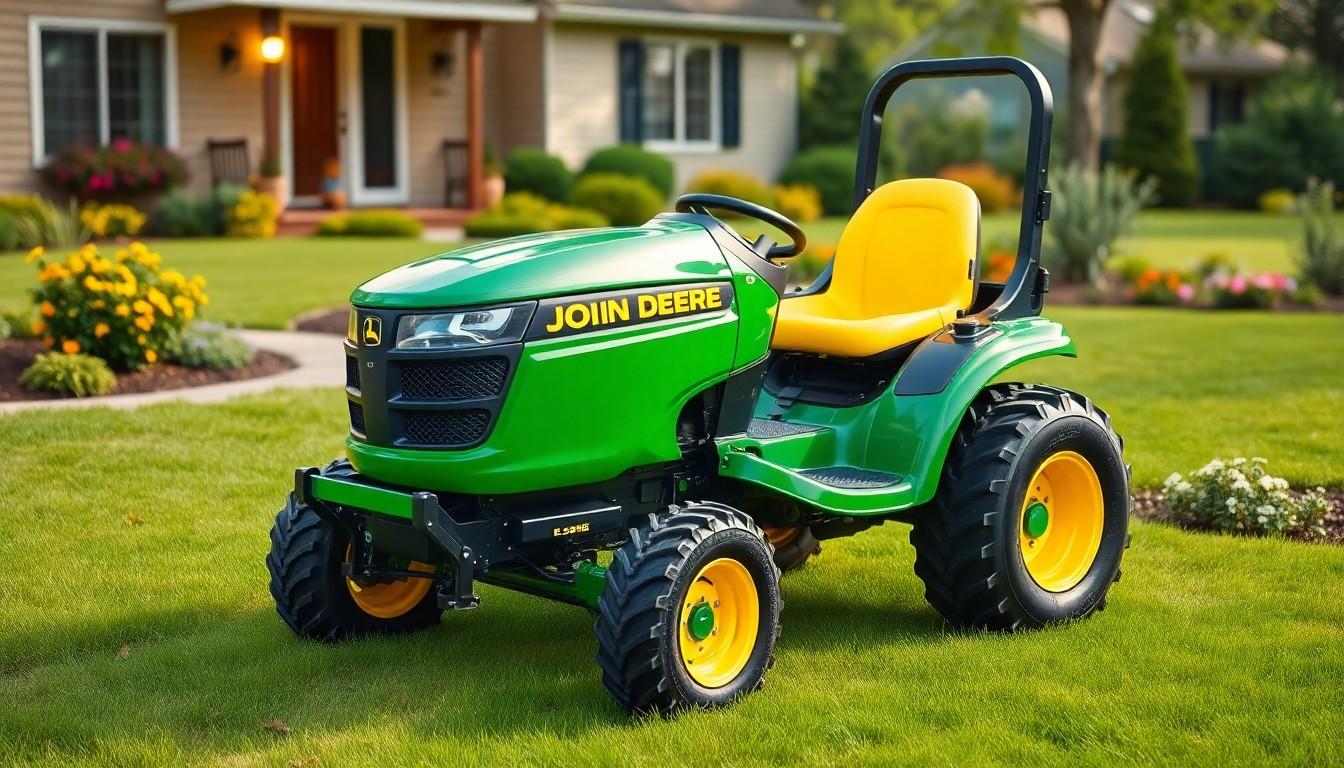
Selecting the ideal John Deere tractor series depends on your exact property size, usage requirements, and budget constraints. Let’s examine which series best suits different user profiles based on their primary applications and demands.
Small Property Owners
The John Deere E Series stands as the optimal choice for homeowners and small property owners seeking reliable equipment for basic tasks. These tractors deliver 24 to 40 HP, providing sufficient power for light gardening, lawn maintenance, and minor landscaping projects. E Series models feature user-friendly hydrostatic transmission systems that simplify operation for occasional users without specialized training. Comfort features remain basic yet adequate for shorter operating sessions typical of residential property maintenance. Homeowners with limited storage space and straightforward maintenance needs find the E Series particularly appealing for its smaller footprint and less complex servicing requirements.
Commercial and Agricultural Applications
John Deere’s G Series tractors excel in demanding commercial environments and agricultural settings where performance capabilities matter most. These machines offer enhanced power outputs ranging from 30 to 66 HP, enabling them to handle intensive farming operations and heavy-duty commercial applications with ease. G Series tractors feature mechanical transmission options that provide superior control and precision during complex agricultural tasks. Operator comfort receives important upgrades in the G Series, including ergonomic seating and intuitive control layouts that reduce fatigue during extended work sessions. Fuel efficiency represents another notable advantage, with certain G Series models consuming 16% less fuel per cubic meter compared to their E Series counterparts. Businesses requiring maximum uptime and productivity benefit from the G Series’ robust construction and advanced technological features designed for continuous commercial operation.
Conclusion
When choosing between John Deere’s E Series and G Series tractors it all comes down to your exact needs and budget. The E Series offers an affordable entry point with straightforward operation ideal for homeowners and light tasks while the G Series delivers enhanced power technology and comfort for demanding commercial applications.
We’ve explored how these two lines differ in design power capabilities and long-term value. Remember that the right choice depends on your property size workload requirements and budget constraints. Both series uphold John Deere’s reputation for quality but serve distinctly different purposes in the market.
For reliable performance at an accessible price point look to the E Series. For advanced features and superior capabilities the G Series is worth the investment.
Frequently Asked Questions
What is the main difference between John Deere E Series and G Series tractors?
The main difference is that E Series tractors are designed for affordability and simplicity, ideal for basic tasks and budget-conscious buyers, while G Series tractors offer enhanced comfort, advanced technology, superior performance, and sophisticated hydraulic systems for more demanding applications. E Series provides essential capabilities with straightforward controls, while G Series features ergonomic designs and digital displays for improved operator experience.
What horsepower range do E Series and G Series tractors offer?
E Series tractors deliver between 24 to 40 horsepower, making them suitable for lightweight applications like gardening and basic property maintenance. G Series tractors feature more powerful engines ranging from 30 to 66 horsepower, designed for more demanding workloads and complex operations.
Which series is better for a small property owner?
The E Series is optimal for small property owners who need reliable equipment for basic tasks. It offers an affordable entry point with user-friendly controls, simpler maintenance requirements, and sufficient power for typical homeowner needs like mowing, light grading, and small garden work. The straightforward design makes it ideal for those who don’t require advanced features.
How do maintenance requirements compare between the two series?
E Series tractors feature simpler systems requiring less frequent maintenance and fewer specialized tools, making them more accessible for owner maintenance. G Series tractors typically need more frequent maintenance checks due to their advanced engine technology and complex systems, potentially requiring specialized tools and expertise for proper servicing.
Are G Series tractors worth the higher price?
G Series tractors justify their higher price for users with demanding workloads or commercial applications. They offer superior fuel efficiency, advanced features, enhanced durability, and better operator comfort that can offset the initial cost over time. They also tend to hold stronger resale values due to their performance capabilities and versatility.
What emissions standards do these tractor series meet?
Both series comply with Tier 4/EU Stage IV emissions regulations. G Series tractors incorporate advanced FT4 or EU Stage IV diesel engines that provide enhanced power and torque while meeting stringent emissions standards. E Series tractors also maintain cost-effective operation while adhering to these environmental compliance requirements.
Which series has better hydraulic capabilities?
G Series tractors offer advanced hydraulic systems with superior lifting capabilities and versatility for complex operations. They often feature optional electrohydraulic boom performance packages and two-speed transmissions. E Series tractors prioritize ease of use with user-friendly hydrostatic transmissions that are sufficient for basic applications but lack the advanced capabilities of the G Series.
How do the ergonomics compare between E and G Series?
G Series tractors feature significantly enhanced operator comfort with ergonomic seating, intuitive control layouts, and advanced cab designs that reduce operator fatigue. E Series tractors provide basic functionality with standard seating and simpler controls, focusing on essential operation rather than premium comfort features.

